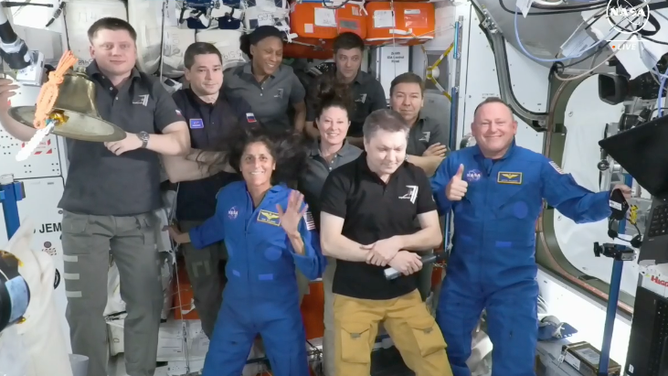Boeing’s Starliner capsule, carrying a two-person NASA crew, successfully docked at the International Space Station today, despite encountering some post-launch issues with its propulsion system. Steve Stich, program manager for NASA’s Commercial Crew Program, described the docking process as challenging, noting that the team had to address several glitches along the way. One of the main issues involved five malfunctioning thrusters initially, which caused a delay in the final approach to the station. However, four of the thrusters were eventually reactivated, allowing the docking procedure to proceed.
In addition to thruster malfunctions, there were concerns about leaks in Starliner’s helium pressurization system. Although engineers were aware of a helium leak before launch and decided to proceed, three more leaks were detected after liftoff. Despite these issues, the mission team determined that there were sufficient reserves to continue safely.
Despite the challenges, NASA astronauts Butch Wilmore and Sunita Williams successfully arrived at the space station aboard the Starliner capsule. This marked the first time that anyone had arrived at the station via a Starliner. After docking, Wilmore expressed his excitement about being attached to the space station and looked forward to completing tasks both on the Starliner and the station itself. Once inside the station, the crew exchanged enthusiastic greetings with the station’s current occupants.
During their stay, Wilmore and Williams will assist with the delivery of cargo and continue checkouts of Starliner’s systems. They are scheduled to return to Earth on June 14.
Following the mission, NASA and Boeing will assess any issues encountered, including the propulsion system glitches, to determine the next steps for certifying Starliner for regular crewed flights to the space station.
Boeing has faced significant delays and cost overruns in the Starliner program due to technical challenges. While SpaceX’s Crew Dragon has become NASA’s primary means of crew transportation, having multiple commercial providers, including Boeing, is considered essential for ensuring reliable access to the space station.
Boeing’s Starliner capsule, designed to ferry astronauts to and from the International Space Station, encountered some glitches during its recent mission to dock with the station. Despite these issues, the mission was ultimately successful, marking a significant milestone in NASA’s Commercial Crew Program.
The main challenge during the docking process was the malfunctioning of several thrusters initially, which caused a delay in the final approach to the space station. However, the mission team was able to reactivate four of the thrusters, allowing the docking procedure to proceed smoothly.
In addition to thruster malfunctions, there were concerns about leaks in Starliner’s helium pressurization system. Although engineers detected a helium leak before launch, they decided to proceed with the mission. However, three more leaks were discovered after liftoff, adding to the complexity of the mission.
Despite these challenges, NASA astronauts Butch Wilmore and Sunita Williams successfully arrived at the space station aboard the Starliner capsule. This marked a significant achievement for Boeing’s Starliner program and demonstrated its capability to transport crew to the station.
Once docked, Wilmore and Williams began their tasks aboard the space station, which include assisting with cargo delivery and conducting checkouts of Starliner’s systems. Their presence on the station will also contribute to ongoing research and experiments conducted in space.
Looking ahead, NASA and Boeing will analyze the data from the mission to address any issues encountered and ensure the safety and reliability of future Starliner flights. This process is crucial for certifying Starliner for regular crewed missions to the space station
